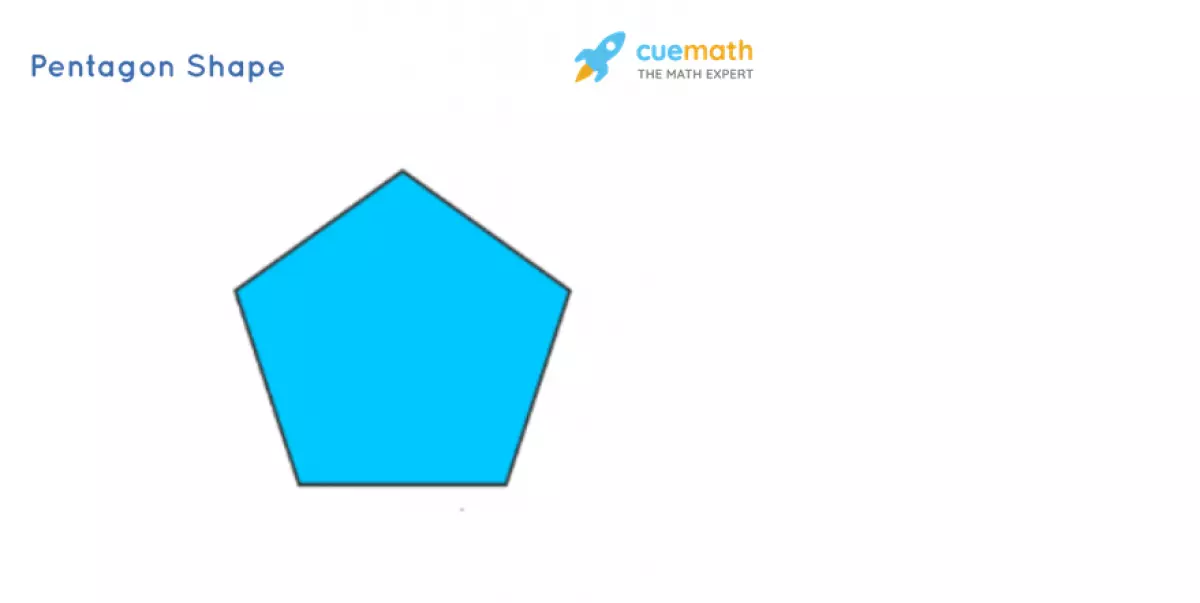Do you know what a pentagon is? It's not just any shape - it's a fascinating five-sided polygon that has captured the attention of mathematicians, architects, and even the United States Department of Defense. In this article, we'll delve into the world of the pentagon shape, exploring its properties, formulas, and even some examples of where it can be found in everyday life.
Unveiling the Pentagon
A pentagon is a two-dimensional shape with five sides and five angles. Derived from the Greek words 'penta' meaning five, and 'gon' meaning angle, a pentagon truly lives up to its name. Take a look at the image below to get a visual idea of its structure.
 The captivating pentagon shape
The captivating pentagon shape
As you can see, a pentagon consists of five straight sides and five interior angles. If it's a regular pentagon, all sides are equal in length, and each interior angle measures 108°. In the case of an irregular pentagon, the interior angles may differ, but they always add up to a total of 540°.
Understanding Pentagon Properties
To identify a shape as a pentagon, there are a few key properties to consider:
- A pentagon has 5 sides and 5 angles.
- It allows for the drawing of 5 diagonals.
- The sum of all interior angles is 540°, while the sum of all exterior angles is 360°.
- In a regular pentagon, each interior angle measures 108°, and each exterior angle measures 72°.
Unraveling Pentagon Formulas
Like any geometric shape, the pentagon also follows specific formulas. Here are some of the basic ones:
- Diagonals of a pentagon: n × (n − 3) ÷ 2 = 5 × (5 − 3) ÷ 2 = 5
- Sum of interior angles of a pentagon: 180° × (n − 2) = 180° × (5 − 2) = 540°
- Each exterior angle of a regular pentagon: 360° ÷ n = 360° ÷ 5 = 72°
- Each interior angle of a regular pentagon: 540° ÷ n = 540° ÷ 5 = 108°
- Area of a regular pentagon: 1/2 × Perimeter × Apothem
- Perimeter of a pentagon: side 1 + side 2 +side 3 + side 4 + side 5
Exploring Pentagon Shape Objects
You might be surprised to find that pentagon-shaped objects exist in our daily lives. From the shape of a cut okra to a symmetrical starfish, the pentagon's unique form can be found all around us. Here are a few examples:
 Some intriguing pentagon shape examples
Some intriguing pentagon shape examples
Unveiling Interesting Facts
The Pentagon shape holds more than just mathematical intrigue. Here are a few interesting facts:
- The Pentagon in Washington, D.C. serves as the headquarters for the United States Department of Defense, perfectly exemplifying the pentagon shape.
- During World War II, President Roosevelt decided that a new building for the Department of War was needed. The architect chose the pentagon shape to reduce walking distance between offices.
Distinguishing Regular from Irregular Pentagons
Not all pentagons are created equal. Depending on their angle measures and side lengths, pentagons can be classified as regular or irregular.
- In a regular pentagon, all interior angles and sides are of equal measure.
- In an irregular pentagon, both the interior angles and sides vary.
Understanding Convex and Concave Pentagons
In addition to regular and irregular classifications, pentagons can also be categorized as either convex or concave.
- A convex pentagon has all interior angles less than 180°, with its vertices pointing outwards.
- A concave pentagon has one or more interior angles greater than 180°, with its vertices pointing inwards.
 Different types of pentagons
Different types of pentagons
Further Exploration
Want to deep dive into the world of pentagons? Check out these related articles:
- Angles in a Pentagon
- Area of Pentagon
- Pentagon Area Calculator
- Decagon
- Pentagonal Pyramid
Now that you're armed with a deeper understanding of the pentagon shape, take a look around and see if you can spot it in various objects or structures. The pentagon truly is a captivating element of geometry that continues to inspire and intrigue mathematicians and designers alike.












